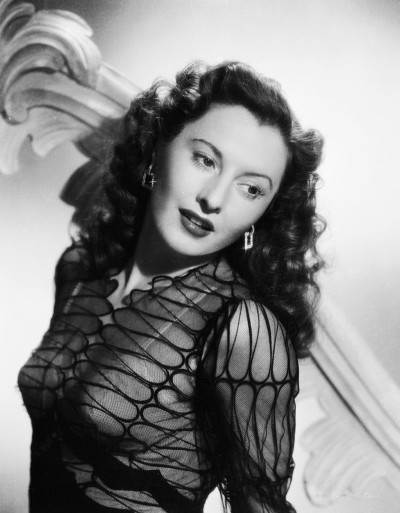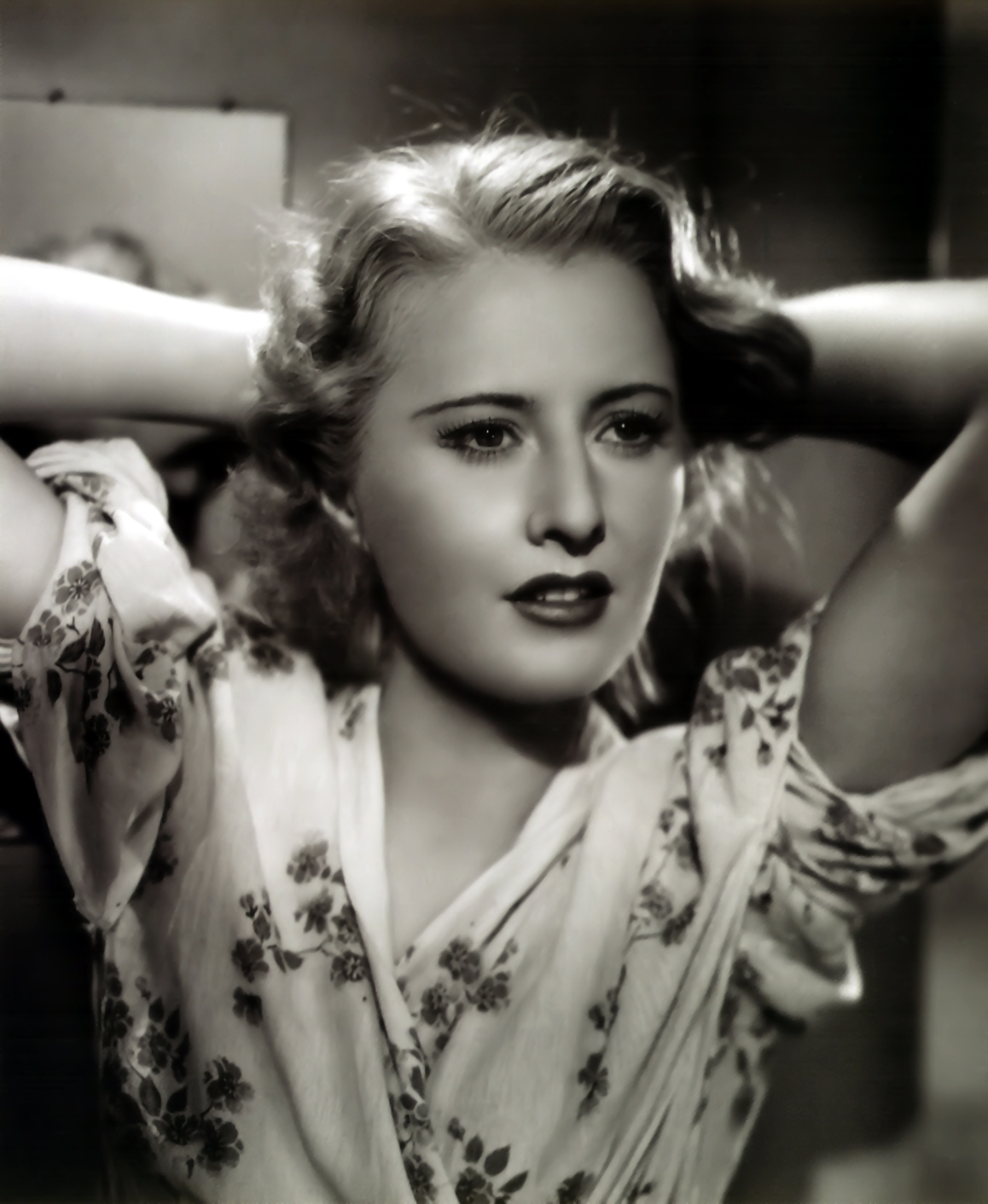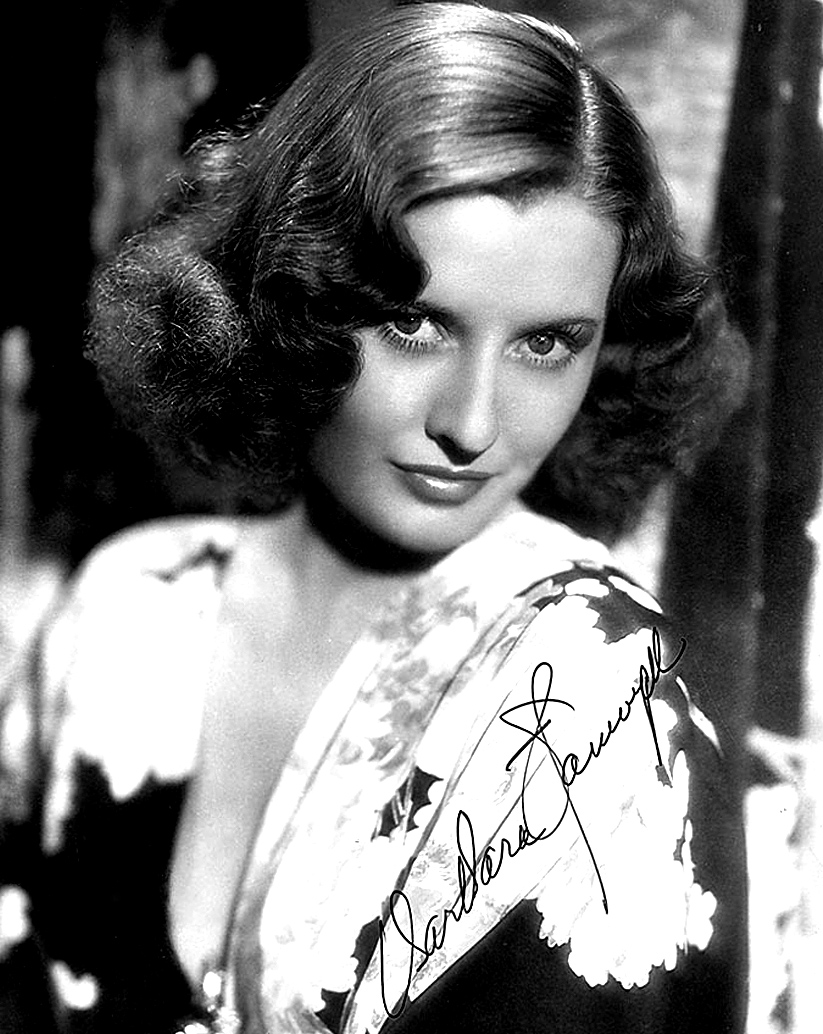Barbara Stanwyck (Ruby Catherine Stevens)

Barbara Stanwyck was born Ruby Catherine Stevens on July 16, 1907, in Brooklyn, New York. She was the fifth and youngest child of Catherine Ann (née McPhee) and Byron E. Stevens. Her parents were working class. Her father was a native of Massachusetts and her mother was an immigrant from Nova Scotia. Ruby was of English and Scottish ancestry, by her father and mother, respectively. When she was four, her mother died of complications from a miscarriage after a drunken stranger accidentally knocked her off a moving streetcar. Two weeks after the funeral, Byron Stevens joined a work crew digging the Panama Canal and was never seen again. Ruby and her brother, Byron, were raised by their older sister Mildred, who was only five years older than Ruby. When Mildred got a job as a John Cort showgirl, Ruby and Byron were placed in a series of foster homes (as many as four different homes in a year), from which Ruby often ran away. During the summers of 1916 and 1917, Ruby toured with Mildred, and practiced her sister’s routines backstage. Watching the movies of Pearl White, whom Ruby idolized, also influenced her drive to be a performer. At age 14, she dropped out of school to take a job wrapping packages at a department store in Brooklyn. Ruby never attended high school, “although early biographical thumbnail sketches had her attending Brooklyn’s famous Erasmus Hall High School.” Soon after, she took a job filing cards at the Brooklyn telephone office for a salary of $14 a week, a salary that allowed her to become financially independent. She disliked both jobs; her real interest was to enter show business even as her sister Mildred discouraged the idea. She then took a job cutting dress patterns for Vogue magazine, but because customers complained about her work, she was fired. Her next job was as a typist for the Jerome H. Remick Music Company, a job she reportedly enjoyed. However, her continuing ambition was to work in show business and her sister finally gave up trying to dissuade her.
In 1923, a few months before her 16th birthday, Ruby auditioned for a place in the chorus at the Strand Roof, a night club over the Strand Theatre in Times Square. A few months later, she obtained a job as a dancer in the 1922 and 1923 seasons of the Ziegfeld Follies, dancing at the New Amsterdam Theater. “I just wanted to survive and eat and have a nice coat,” Stanwyck said. For the next several years, she worked as a chorus girl, performing from midnight to seven a.m. at nightclubs owned by Texas Guinan. She also occasionally served as a dance instructor at a speakeasy for gays and lesbians owned by Guinan. One of her good friends during those years was pianist Oscar Levant, who described her as being “wary of sophisticates and phonies.” In 1926, Billy LaHiff, who owned a popular pub frequented by showpeople, introduced Ruby to impresario Willard Mack. Mack was casting his play The Noose and LaHiff suggested that the part of the chorus girl be played by a real chorus girl. Mack agreed and after a successful audition, gave the part to Ruby. She co-starred with actors Rex Cherryman and Wilfred Lucas. As initially staged, the play was not a success. In an effort to improve it, Mack decided to expand Ruby’s part to include more pathos. The Noose re-opened on October 20, 1926, and became one of the most successful plays of the season, running on Broadway for nine months and 197 performances. At the suggestion of either Mack or David Belasco, Ruby changed her name to Barbara Stanwyck by combining the first name of her character, Barbara Frietchie, with Stanwyck, after the name of another actress in the play, Jane Stanwyck.
Stanwyck became a Broadway star soon after when she was cast in her first leading role in Burlesque (1927). She received rave reviews and it was a huge hit.[24] Film actor Pat O’Brien would later say on a talk show in the 1960s: “The greatest Broadway show I ever saw was a play in the 1920s called ‘Burlesque’.” In Arthur Hopkins’ autobiography, To a Lonely Boy, he describes how he came about casting Stanwyck, saying: “After some search for the girl, I interviewed a nightclub dancer who had just scored in a small emotional part in a play that did not run (The Noose). She seemed to have the quality I wanted, a sort of rough poignancy. She at once displayed more sensitive, easily expressed emotion than I had encountered since Pauline Lord. She and (Hal) Skelly were the perfect team, and they made the play a great success. I had great plans for her, but the Hollywood offers kept coming. There was no competing with them. She became a picture star. She is Barbara Stanwyck.” He also describes Stanwyck as “The greatest natural actress of our time,” noting with sadness, “One of the theater’s great potential actresses was embalmed in celluloid.” Around this time, Stanwyck was summoned by film producer Bob Kane to make a screen test for his upcoming 1927 silent film Broadway Nights. She lost the lead role because she could not cry in the screen test but was given a minor part as a fan dancer. This was Stanwyck’s first film appearance. While playing in Burlesque, Stanwyck had been introduced to her future husband, actor Frank Fay, by Oscar Levant. Stanwyck and Fay were married on August 26, 1928, and soon moved to Hollywood.
Stanwyck’s first sound film was The Locked Door (1929), followed by Mexicali Rose, released in the same year. Neither film was successful; nonetheless, Frank Capra chose Stanwyck for his Ladies of Leisure (1930). Numerous prominent roles followed, among them the children’s nurse who saves two little girls from being gradually starved to death by Clark Gable’s vicious character in Night Nurse (1931); So Big!, as a valiant midwest farm woman (1932); Shopworn 1932; the ambitious woman from “the wrong side of the tracks” in Baby Face (1933); the self-sacrificing title character in Stella Dallas (1937); Molly Monahan in Union Pacific (1939) with Joel McCrea; the con artist who falls for her intended victim (played by Henry Fonda) in The Lady Eve (1941); the extremely successful, independent doctor Helen Hunt in You Belong to Me (1941) also with Fonda; a nightclub performer who gives a professor (played by Gary Cooper) a better understanding of “modern English” in the comedy Ball of Fire (1941); the woman who talks an infatuated insurance salesman (Fred MacMurray) into killing her husband in Double Indemnity (1944); the columnist caught up in white lies and a holiday romance in Christmas in Connecticut (1945); and the doomed wife in Sorry, Wrong Number (1948). She also played a doomed concert pianist in The Other Love (1947); the piano music was played by Ania Dorfmann, who drilled Stanwyck for three hours a day until she was able to move her arms and hands to match the music. Stanwyck was reportedly one of the many actresses considered for the role of Scarlett O’Hara in Gone with the Wind (1939), although she did not receive a screen test. In 1944, Stanwyck was the highest-paid woman in the United States.
Pauline Kael described Stanwyck’s acting, “[she] seems to have an intuitive understanding of the fluid physical movements that work best on camera” and in reference to her early 1930s film work, “early talkies sentimentality … only emphasizes Stanwyck’s remarkable modernism”. Many of her roles involved strong characters. In Double Indemnity, Stanwyck brought out the cruel nature of the “grim, unflinching murderess,” marking her as the “most notorious femme” in the film noir genre. Yet, Stanwyck was known for her accessibility and kindness to the backstage crew on any film set. She knew the names of their wives and children. Frank Capra said of Stanwyck: “She was destined to be beloved by all directors, actors, crews and extras. In a Hollywood popularity contest she would win first prize hands down.” William Holden and Stanwyck were friends of long standing. When Stanwyck and Holden were presenting the Best Sound Oscar, Holden paused to pay a special tribute to her for saving his career when Holden was cast in the lead for Golden Boy (1939). After a series of unsteady daily performances, he was about to be fired, but Stanwyck staunchly defended him, successfully standing up to the film producers. Shortly after Holden’s death, Stanwyck recalled the moment when receiving her honorary Oscar: “A few years ago I stood on this stage with William Holden as a presenter. I loved him very much, and I miss him. He always wished that I would get an Oscar. And so tonight, my golden boy, you got your wish”.
When Stanwyck’s film career declined in 1957, she moved to television. Her 1961–1962 series The Barbara Stanwyck Show was not a ratings success but earned her an Emmy Award. The 1965–1969 Western series The Big Valley on ABC made her one of the most popular actresses on television, winning her another Emmy. She was billed as “Miss Barbara Stanwyck”. She also appeared in the television series, The Untouchables with Robert Stack. She appeared in 1963 episode of Wagon Train, the “Molly Kincaid Story”, and alongside Elvis Presley in the movie Roustabout in 1964. Years later, Stanwyck earned her third Emmy for The Thorn Birds. In 1985, she made three guest appearances in the primetime soap opera Dynasty prior to the launch of its short-lived spin-off series The Colbys in which she starred alongside Charlton Heston, Stephanie Beacham and Katharine Ross. Unhappy with the experience, Stanwyck remained with the series for only one season (it lasted for two), and her role as Constance Colby Patterson would prove to be her last. Earl Hamner Jr. (producer of The Waltons) had initially wanted Stanwyck for the lead role of Angela Channing on the 1980s soap opera Falcon Crest, but she turned it down and the role went to her best friend, Jane Wyman.
Stanwyck’s retirement years were active, with charity work outside the limelight. She was robbed and assaulted inside her Beverly Hills home in 1981. The following year, while filming The Thorn Birds, the inhalation of special-effects smoke on the set may have caused her to contract bronchitis. The illness was compounded by her cigarette habit; she had been a smoker from age nine until four years before her death. Stanwyck died on January 20, 1990 of congestive heart failure and chronic obstructive pulmonary disease at age 82 at Saint John’s Health Center. She had indicated that she wished for no funeral service. In accordance with her wishes, her remains were cremated and the ashes scattered from a helicopter over Lone Pine, California, where she had made some of her western films.
Born
- July, 16, 1907
- USA
- Brooklyn, New York
Died
- January, 20, 1990
- USA
- Santa Monica, California
Cause of Death
- congestive heart failure and chronic obstructive pulmonary disease
Other
- Cremated



